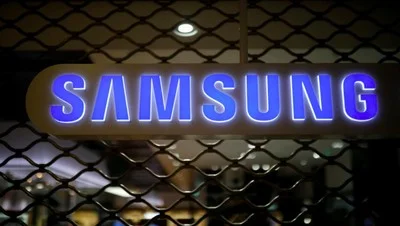It’s no secret that the semiconductor industry has been facing tough times lately, and Samsung has recently warned of sluggish chip sales for the rest of the year and into 2023. This is due to a global decline in the demand for smartphones, computers, and data servers. But what does this mean for consumers, and how is Samsung planning to tackle this downturn?
Samsung’s Co-CEO and head of the semiconductor division, Kyung Kye-hyun, recently stated that the second half of this year looks bad, and next year needs to show a clear momentum for much improvement. This news may surprise some, as the semiconductor industry saw overwhelming growth during the coronavirus pandemic. The changing nature of work, education, and entertainment brought an unexpectedly high demand for mobile devices, computers, and data servers. However, consumer spending on those products has declined lately amid global economic headwinds.
Samsung’s Plan to Overcome Slowdowns
Kyung Kye-Hyun emphasized the importance of continued investment in production technologies and research and development to overcome such slowdowns. Samsung recently opened its most extensive semiconductor manufacturing facility yet at its Pyeongtaek campus in South Korea. It is constructing a new chip plant in the US, investing $17 billion in the new factory in Taylor, Texas. The Biden administration recently approved subsidies and tax credits for semiconductor companies to expand production in the US, which could benefit Samsung.
However, the company’s foundry unit has lost significant clients to its arch-rival TSMC due to performance, thermal, and yield issues. Kyung acknowledged this and vowed to improve, stating that long-term strategic partnerships are essential to winning customers.
Since 2012, Samsung’s commitment has seen over $13 billion poured into the Austin facility, operating under the banner of Samsung Austin Semiconductor. This substantial investment not only stands as Texas’ premier foreign investment but also ranks among the most significant singular foreign assets in the United States.
While Samsung remains optimistic about the future, industry watchers forecast lower chip sales than expected in 2023. Research firm World Semiconductor Trade Statistics recently lowered its semiconductor growth projection for 2022 from 16.3 percent to 13.9 percent, reaching $633 billion, and also reduced the growth forecast for 2023 from 5.1 percent to 4.6 percent.
Samsung’s Efforts to Avoid Collateral Damage in US-China Conflict
In addition to the global decline in demand for smartphones, computers, and data servers, the US-China conflict could affect Samsung’s chip sales. As China makes up about 40 percent of the global tech industry, Samsung is preparing to avoid becoming collateral damage in the US-China conflict.
Kyung stated, “Rather than taking sides in the U.S.-China conflict, we are working to find a win-win solution for all sides and think it’s the right direction to be going in.”
The Korean firm wants to remain on good terms with China but needs help bringing equipment for expansion due to the US export restrictions. Nevertheless, Samsung is expanding its production capacity in the US and South Korea and is determined to weather the storm with continued investment in technology and innovation.
Other Websites’ Reviews on the Same Topic
This isn’t the first time that the semiconductor industry has faced a downturn. Over the years, the industry has had several periods of boom and bust. TechCrunch notes, “The semiconductor industry has been characterized by intense growth followed by periods of oversupply and falling prices.”
Meanwhile, Forbes highlights the impact of the pandemic on the semiconductor industry, stating that “the pandemic has accelerated the demand for chips for use in devices such as laptops, gaming consoles, and home appliances, but this boom in demand has come up against challenges such as supply chain disruptions and factory shutdowns.”
Conclusion
In conclusion, Samsung’s warning of sluggish chip sales for the rest of the year and into 2023 highlights the semiconductor industry’s challenges. Nevertheless, Samsung remains confident that continued investment in production technologies and R&D is critical to overcoming such slowdowns and turning bad times into promising opportunities.
Samsung’s recent investment in the new chip plant in Taylor, Texas, and the Biden administration’s approval of subsidies and tax credits for semiconductor companies to expand production in the US, are expected to benefit Samsung and the semiconductor industry.
However, Samsung is facing stiff competition from its arch-rival TSMC in the foundry business, and it has lost significant clients due to performance, thermal, and yield issues. Kyung Kye-hyun, Samsung’s co-CEO and head of the semiconductor division, acknowledged this and vowed to improve.
While the semiconductor industry saw overwhelming growth during the coronavirus pandemic, the decline in demand for smartphones, computers, and data servers, coupled with global economic headwinds, has resulted in a sharp downturn in the industry. Research firm World Semiconductor Trade Statistics has lowered its semiconductor growth projection for 2022 and 2023, underscoring the industry’s uncertainty.
Other tech giants such as Apple, Qualcomm, and Intel are also facing similar challenges in the semiconductor industry, and they are responding by scaling back capacity expansion.
According to TechCrunch, a leading technology media property, the current semiconductor shortage will likely be around for a while and may take several years to resolve. However, this could be a blessing in disguise for the industry, as it could spur innovation, increase investments in R & D, and lead to new technologies that will benefit consumers in the long run.
It remains to be seen how Samsung and other players in the semiconductor industry will navigate these challenges and come out on top. But one thing is sure, continued investment in R&D, production technologies, and strategic partnerships will be critical to overcome the current slowdown and remain competitive in the long term.









